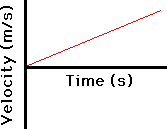Thursday, October 15, 2015
Blogging in Physical Science
Our blog can be used for a variety of purposes. All physical science students can post extension work, reflections from our classwork, relevant website links, relevant videos, or any other content worth sharing to peers. We encourage you to comment on other students work and engage in learning in a way that is meaningful to you. The only rule of the blog is to be respectful and appropriate!
Wednesday, October 14, 2015
Force 5.1
10-14,10-15
This concept states that the stronger the field the greater the force placed on the objects in the field.
Video Links
Class Activities.
In class we did the stations on forces at a distance. These demonstrate the objective because they demonstrate that the stonger the field the greater the forces exerted on the objects in the field. For example when the larger magnet was being moved closer to the small magnet it attracted the small magnet from the farthest distance this is because the largest magnet had the strongest field. Another example was the balloon. The more you rubbed the balloon on your hair the more electricity it would generate. This caused it to pick up more pieces of paper.
Tuesday, September 8, 2015
Motion 3.1 Velocity vs. Time graphs
9/8-9/16/15
Motion 3.1 Velocity vs. Time graphs
General shape of graph: http://www.physicsclassroom.com/Class/1DKin/U1L4a.cfm
Motion comparison: http://tube.geogebra.org/student/m1392369

You can tell if an object is moving at a constant velocity or if it is accelerating based on the object's slope. If the line is horizontal or has a slope of zero, it is moving at a constant velocity. If the line has a slope, then it is accelerating.
| Positive Velocity Zero Acceleration | Positive Velocity Positive Acceleration |
|---|---|
 |  |
Friday, August 28, 2015
Motion 1.2 Motion Diagrams
Motion 1.2 Motion Diagrams
Links to learn off of:
Class Summary:
We first started exploring this with a Pear Deck for Mr. Little to see the current understanding of motion diagrams, we learned that the longer the arrow, the faster youŕe going and every dot represents one unit of time. From there on we used motion diagrams to help represent motion of an object and converting other forms of showing motion to motion diagrams. We also used many labs to help show the motion of objects in the lab.
Videos and Image
https://www.youtube.com/watch?v=tFLc-ZxHDEE
https://www.youtube.com/watch?v=9bVVresSivk
https://www.youtube.com/watch?v=afvWN3qUzjc
https://www.youtube.com/watch?v=9bVVresSivk
https://www.youtube.com/watch?v=afvWN3qUzjc
Swift Taylor
Thursday, August 20, 2015
Displacement
Displacement
2.1
August 20th
Displacement is basically your beginning point minus your ending point, which finds how far away you are from where you began.

Subscribe to:
Comments (Atom)

